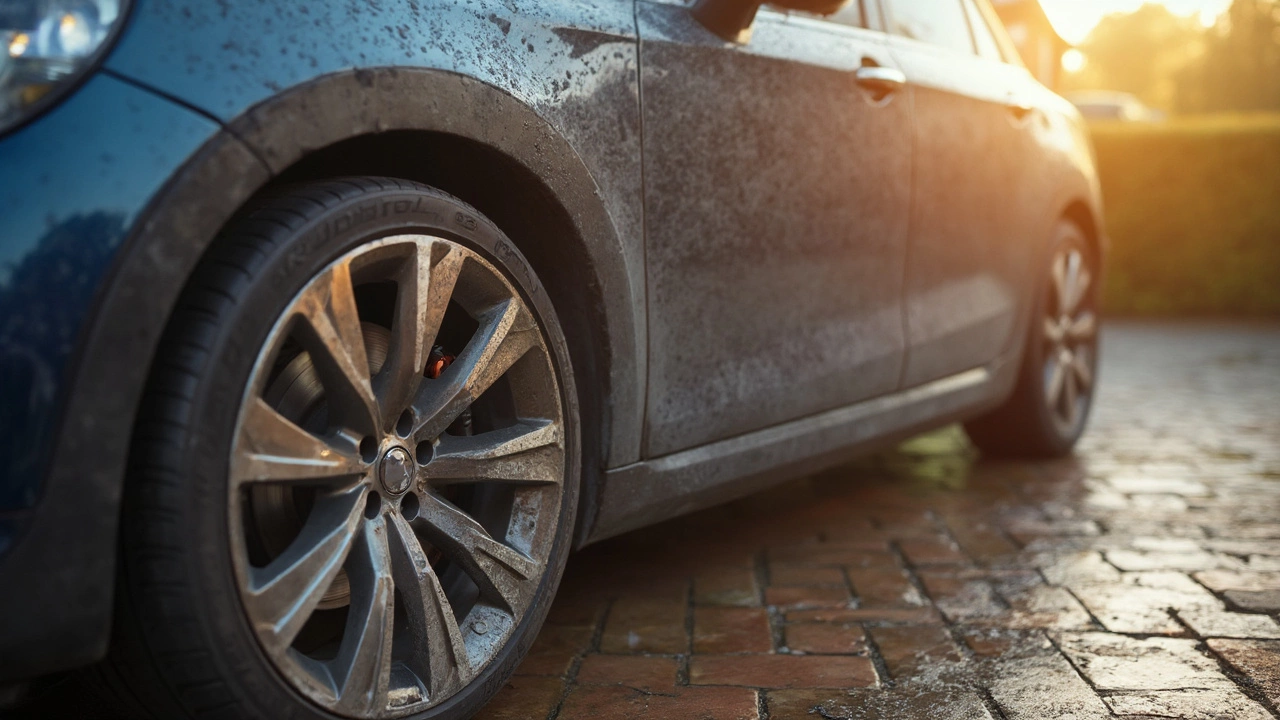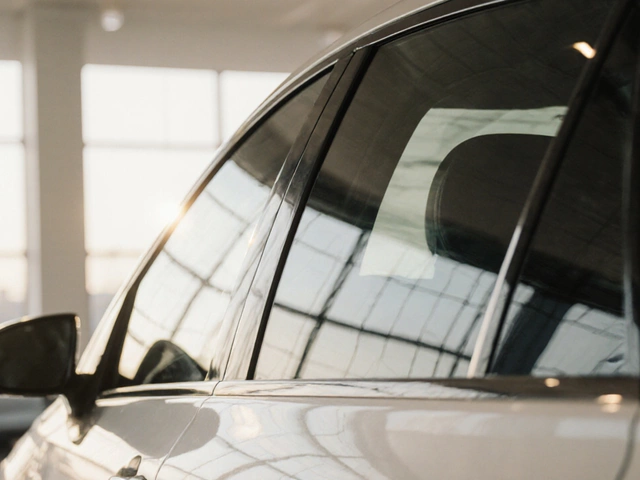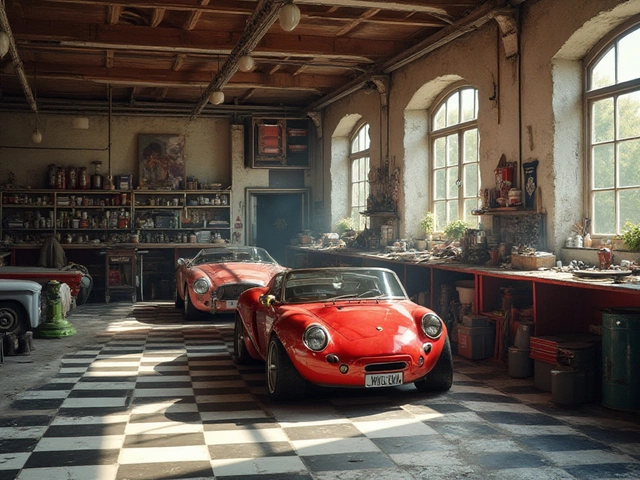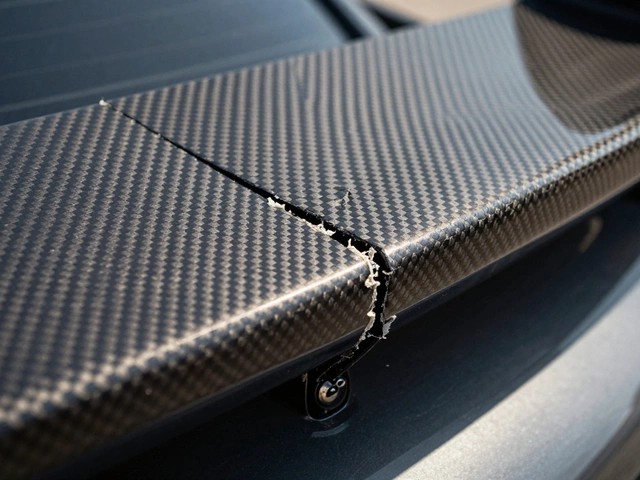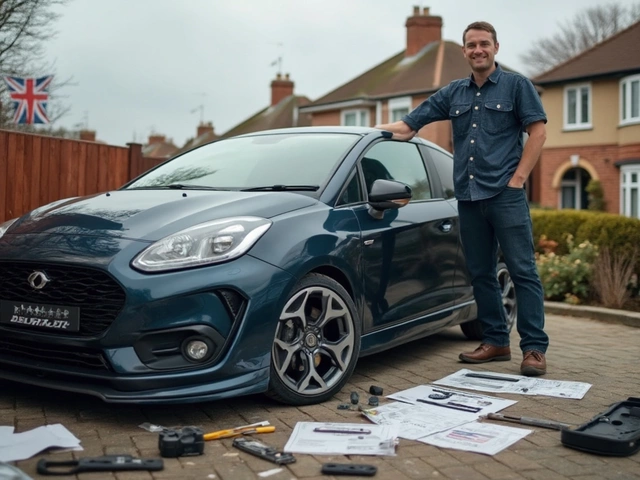You see a gleaming car pass by, sparkling wheels catching the sunlight. The shine doesn’t just happen by magic—a lot of work, or at least, regular effort is behind that look. But then, plenty of drivers ask: How often should you really clean your alloy wheels? Some just do it before a car meet, others barely bother until dust cakes on. The answer isn’t as simple as picking a number out of a hat. Your driving habits, weather, and even where you park make a big difference. Here in Brisbane, where any week can serve up a dust storm or a sticky humid day, wheel care isn’t something you can ignore for long if you care about your car’s look—and more importantly, its value.
Why Regular Alloy Wheel Cleaning Matters
The first instinct for many people is: "Wheels are just wheels, right? They get dirty." But pay close attention, and you’ll find it’s not just about appearances. Over time, brake dust, road salt, grime, and even tiny metal particles can settle on your alloys. This stuff is more than just ugly—it’s corrosive. Brake dust contains tiny bits of iron that can start bonding with your wheels' finish, slowly eating away at factory coatings. The result? Permanent marks, rust spots, or discoloration that no amount of elbow grease can truly reverse.
One study from the UK found that leaving brake dust on wheels for months can decrease the lifespan of a wheel’s lacquer by up to 25%. That’s not just a problem for people in snowy regions, either—humid climates do their share of damage by keeping moisture trapped on your wheels. Even splashing through a puddle of Brisbane’s rainwater brings its own nasties, as mineral-laden water dries on your rims and leaves behind deposits.
Keeping wheels clean isn’t only about fighting corrosion. You get better braking performance, too. Caked-on grime messes with heat dissipation, making your brakes less effective over time. For those with night-black wheels or matte finishes, dirt shows up even faster, demanding constant attention. If you leave things too long, you might even void your warranty—some manufacturers check for regular maintenance when you bring in wheels for repair or replacement.
How Often Should You Clean Alloy Wheels in Real Life?
So, here’s the million-dollar question: how often is often enough? If you ask seasoned detailers—or just check out car lover forums—you’ll hear anything from weekly to monthly. Truth is, there’s no magic number that fits everyone. For everyday commuters around Brisbane, cleaning every two weeks usually does the trick. But if you’re tackling rougher terrain, love winding country drives on weekends, or your parked car faces a busy road, aim for once a week. Why? Every trip through mud, dust, or that harmless-looking park under a jacaranda tree means more stuff has the chance to stick to your alloys.
If you don’t drive your car much, or just use it for city hops, you might stretch cleaning windows to three or four weeks and get away with it. But never let visible brake dust or sticky dirt linger—those are early signs that the wheel’s finish is under attack. After driving in the rain or during lots of construction work (pretty common around here), you might want a quick rinse, even if it’s just with the hose. Season also matters: winter in the north can mean thick dust, while summer storms splash up mud and splash road tar onto your wheels.
| Driving Style or Exposure | Recommended Cleaning Frequency |
|---|---|
| City driving (low dust, little rain) | Every 2-3 weeks |
| Frequent highway/road trips | Weekly |
| After heavy rain or construction zones | As needed (ideally, quick rinse) |
| Parked outside with tree cover | Weekly |
| Show cars or enthusiast vehicles | Every week or before events |
One trick some locals use: wipe a finger along your alloys. If you pick up a visible smear or your finger comes away black, it’s time for a clean. Trust your eyes and touch, not just the calendar.
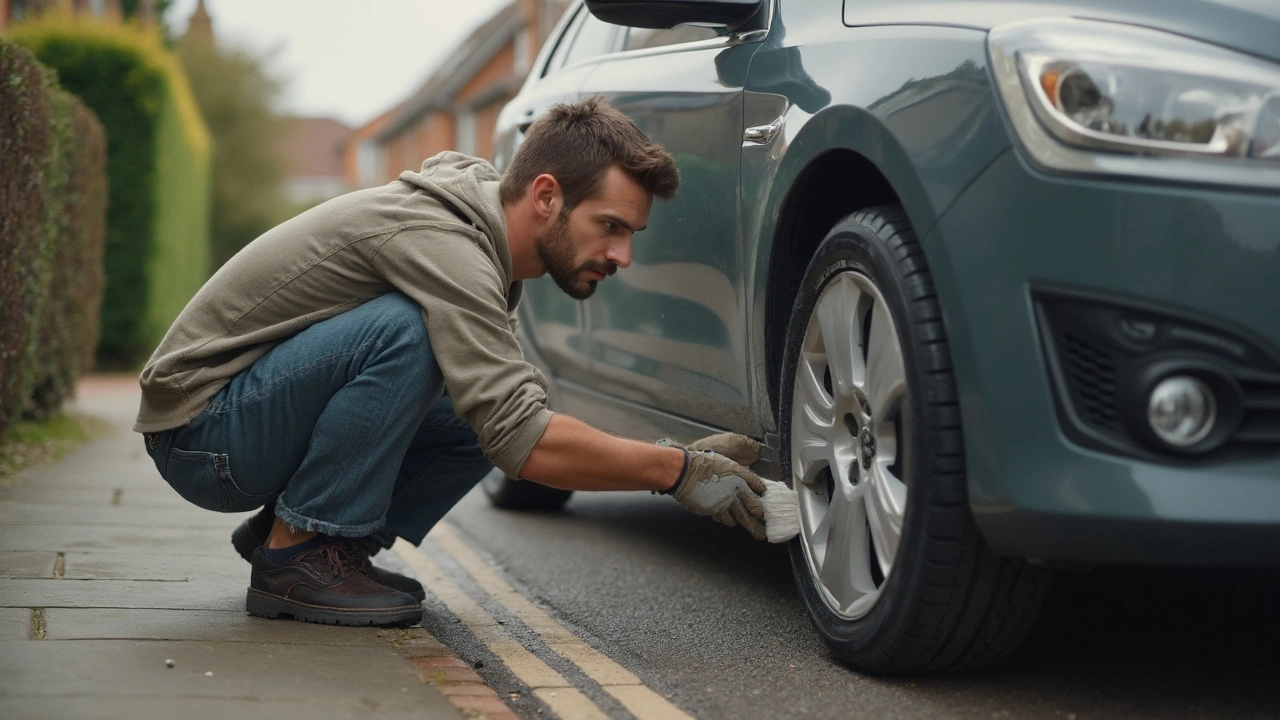
Best Practices for Cleaning Alloy Wheels
Okay, so you’re ready to keep your wheels looking sharp. Grabbing a bucket and soapy sponge is the start, but there’s more to it if you want to avoid scratching your finish or missing hidden grime. First, always wait until your wheels are cool. Hot alloys react badly when sprayed with cold water and could warp over time. Spray your wheels with water to shift loose dirt—that way you’re not dragging particles across the surface and chewing up the finish.
A dedicated wheel cleaner works better than regular car shampoo. Look for pH-balanced formulas—they’re tough on grime but gentle on finishes. Skip anything acid-based unless your wheels are seriously corroded, and even then, read the label like your paint job depends on it. Soft brushes are your friend. Use a separate brush for wheels—you don’t want grime on your brushes scratching the paint. Get into the lug nuts and corners. Toothbrushes can work for fiddly spots, but make sure the bristles aren’t too stiff.
If you’re trying to get rid of hardened brake dust, let the wheel cleaner soak for a few minutes before scrubbing. But don’t let it dry out or you’ll get streaks. One hack: instead of one heavy wash, do two lighter washes, rinsing thoroughly between. Dry with a microfiber towel to avoid water spots. If you want to go all out, finish with an alloy wheel sealant. These products build a protective layer against brake dust and make the next clean much faster. Not everyone bothers, but it pays off in the long run.
- Rinse first, then clean.
- Use the right brush (dedicated to wheels).
- Pick a quality, pH-neutral wheel cleaner.
- Don't clean hot wheels.
- Dry with a microfiber towel.
- Seal for added protection, if you want an easier clean next time.
If you’re parked near the ocean, pay extra attention—sea salt eats into metal fast. For off-roaders, rinse after every adventure, no questions asked. Brisbane’s humidity, plus dust and salt, adds up to a proper recipe for corrosion if you slack off.
Spotting Early Signs of Damage—and What to Do About It
Even with the best care, sometimes you’ll spot trouble. Discoloration, flaky paint, rough spots, or tiny rust specks all signal it’s time to act. Catching these early saves you cash and hassle. Run your finger across the rim—if it feels gritty, or you see patches that dull the shine, you’ve likely got a buildup problem. Small chips from flying stones should get touched up right away so rust doesn’t take hold.
Now, if you wait too long or never check your alloys, damage can creep in quietly. Once corrosion gets under the finish, fixing it means professional work—sometimes even a full wheel respray. That’s expensive, often costing more than buying a set of decent tires. A friend of mine ignored his wheels for months; when he finally paid attention, his shiny black alloys had gone grey and rough. He ended up paying nearly $200 per wheel for professional restoration. Compare that to 15 minutes of cleaning every week or two.
Watch out for weird patterns too. If you see pitting (tiny holes or dots), that’s brake dust doing its worst. Clay bars can help remove stubborn marks, though use them gently and only as a last resort. If you find damage, don’t panic—most minor marks can be softened with polish or touch-up paint designed for alloys. The quicker you fix things, the less chance there is for recurring problems. Some car washes offer wheel scrubs as extras, but nothing matches hand cleaning for quality and accuracy.
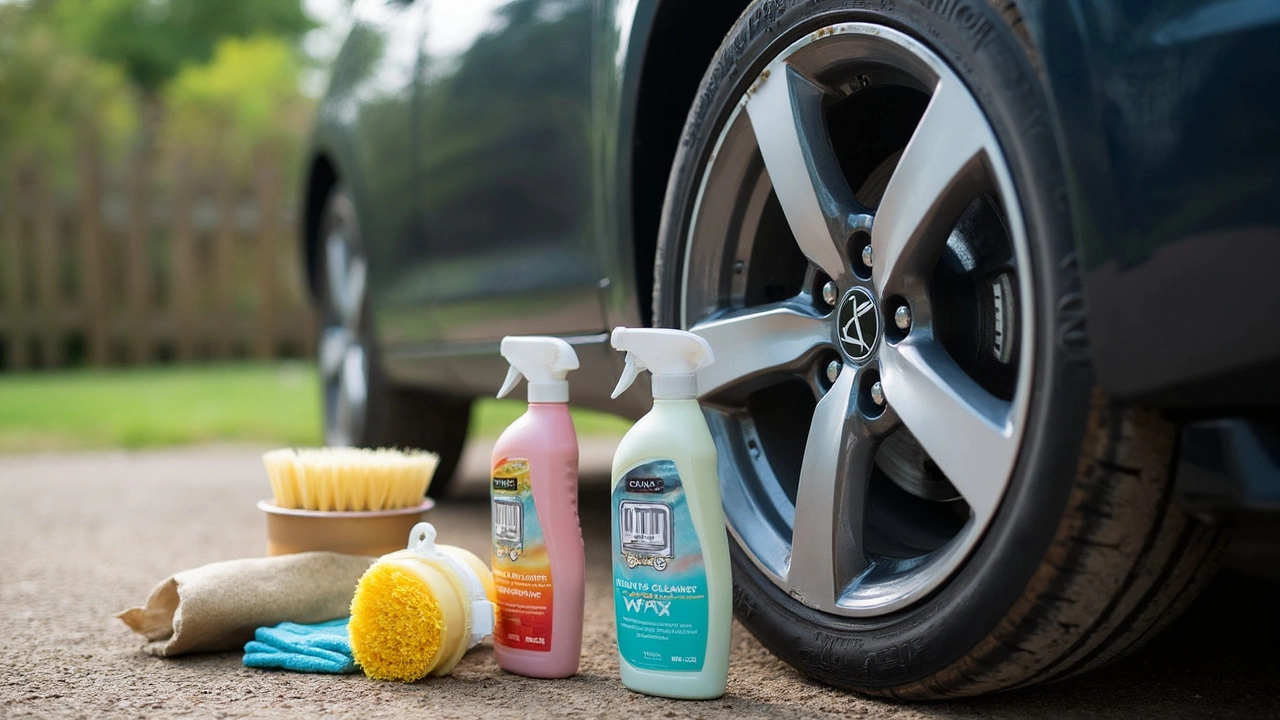
Quick Tips and Surprising Facts About Alloy Wheel Care
Here’s a fun fact: a study by the German automotive association (ADAC) found that clean wheels shed heat up to 7% faster than dirty ones. It’s not just about looks—a clean wheel protects your car’s performance. If you’ve got a newer car with tire pressure sensors—don’t spray cleaners into the valves. Some cleaners corrode valves over time, messing with your readings.
Got a favourite cleaning playlist? Time your wheel cleaning sessions. Most drivers can get all four wheels looking fresh in the length of three good songs. It’s a small time investment with big payback. Keep an old toothbrush handy for tight spots. If birds do their thing on your alloys (happens a lot if you park under trees in the Brisbane heat), rinse it off ASAP. Bird poop is surprisingly acidic and can stain alloys fast.
Want your job easier next time? Apply a light coat of spray wax after each wash. It won’t last forever but will give you a fighting chance against brake dust. Don’t forget: keeping up a routine is much easier than trying to rescue neglected rims later. If you’re short on time, at least give your wheels a good rinse—and leave the soap-and-scrub marathon for the weekend.
In the end, clean alloy wheels aren’t just for show. With the right timing and a bit of routine, your car keeps its shine, holds its value, and proves you actually care behind the wheel. And trust me, nothing gets more nods from fellow drivers than a set of brilliantly clean rims on a sunny Brisbane day.

